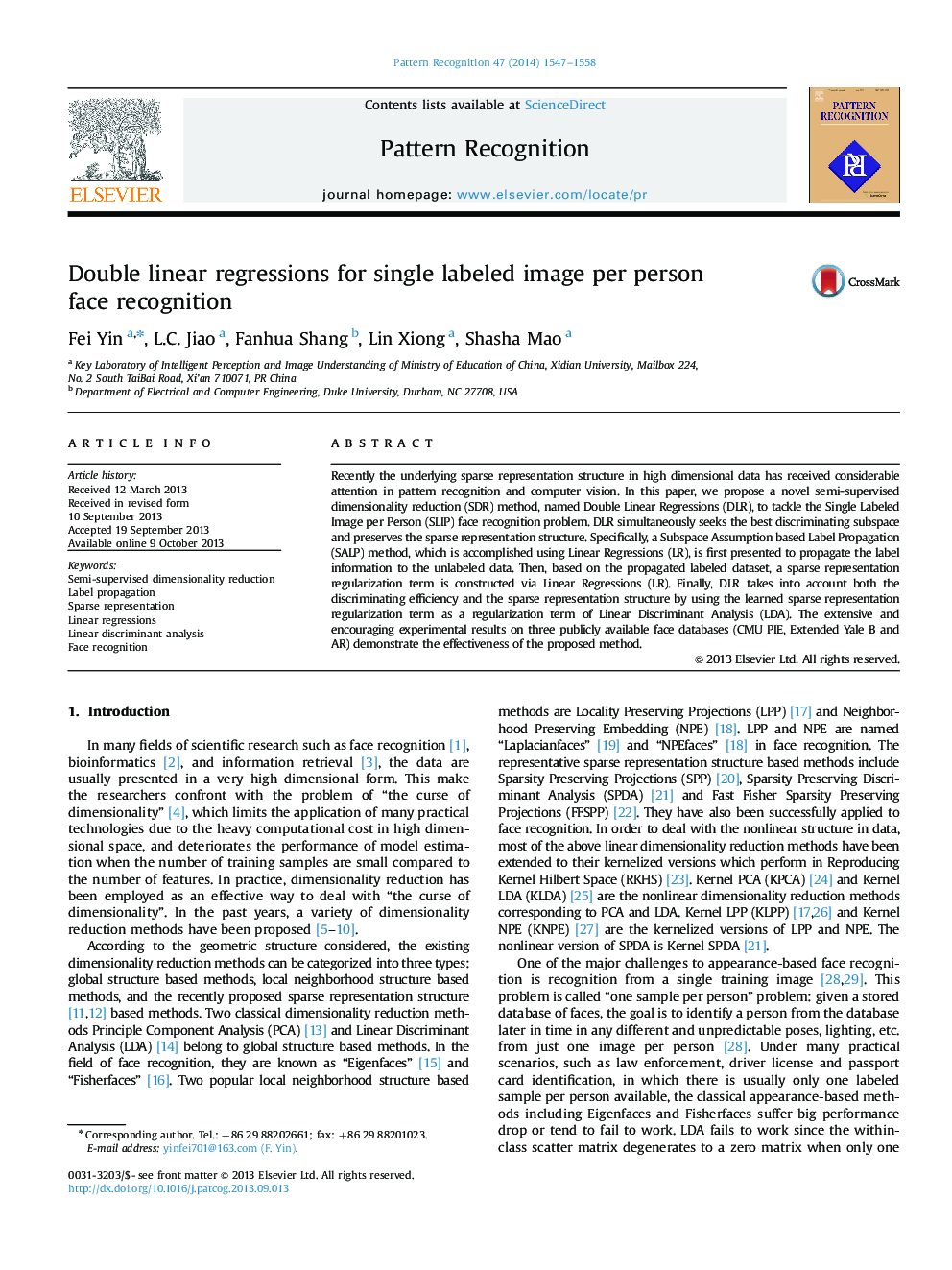| کد مقاله | کد نشریه | سال انتشار | مقاله انگلیسی | نسخه تمام متن |
|---|---|---|---|---|
| 532058 | 869903 | 2014 | 12 صفحه PDF | دانلود رایگان |
واژگان کلیدی
1.مقدمه
2. مرور مختصری بر LDA و RDA
2.1 LDA
2.2. RDA
3. انتشار برچسب مبتنی بر فرضیه زیرفضا
شکل 1. فرایند یادگیری ساختار نمایش پراکنده
3.1 بر اساس طبقه بندی بر اساس فرض فرض زیرمجموعه
3.2. یادگیری ساختار نمایش پراکنده
3.3. سازمان دهنده حفظ پراکندگی
3.4. SDR مبتنی بر رگرسیون های خطی دوگانه
3.5. DLR هسته
شکل 2. (a) دسته بندی روش های کاهش بعد-چندی مربوطه طبق حالت نظارتی و (b) دسته بندی روش های کاش بعد-چندی مربوطه طبق ساختار هندسی در نظر گرفته شده.
3.6. تجزیه و تحلیل پیچیدگی محاسباتی
4. مقایسه با روش های مربوطه
شکل 3. (a) برخی از چهره های اولین فرد در پایگاه داده PIE، (b) چهره های جزئی اولین شخص در پایگاه Extended Yale B و (c) تمامی 14 چهره اولین شخص در پایگاه داده AR.
5. آزمایش ها
5.1. تعریف پایگاه داده ها
5.2. مقداردهی تجربی
5.3. نتایج تجربی و مباحث
5.4. بررسی های بیش تر الگوریتم DLR
6. نتیجه گیری ها و کارهای آینده
• DLR seeks the best discriminating subspace and preserves the sparse structure.
• DLR uses label information to learn a more discriminative sparse structure.
• Sparse coefficient vector is quickly computed by class specific linear regression.
• The difficulty of selecting graph construction parameters is avoided in DLR.
• Promising experimental results on three public face datasets are presented.
Recently the underlying sparse representation structure in high dimensional data has received considerable attention in pattern recognition and computer vision. In this paper, we propose a novel semi-supervised dimensionality reduction (SDR) method, named Double Linear Regressions (DLR), to tackle the Single Labeled Image per Person (SLIP) face recognition problem. DLR simultaneously seeks the best discriminating subspace and preserves the sparse representation structure. Specifically, a Subspace Assumption based Label Propagation (SALP) method, which is accomplished using Linear Regressions (LR), is first presented to propagate the label information to the unlabeled data. Then, based on the propagated labeled dataset, a sparse representation regularization term is constructed via Linear Regressions (LR). Finally, DLR takes into account both the discriminating efficiency and the sparse representation structure by using the learned sparse representation regularization term as a regularization term of Linear Discriminant Analysis (LDA). The extensive and encouraging experimental results on three publicly available face databases (CMU PIE, Extended Yale B and AR) demonstrate the effectiveness of the proposed method.
Journal: Pattern Recognition - Volume 47, Issue 4, April 2014, Pages 1547–1558
